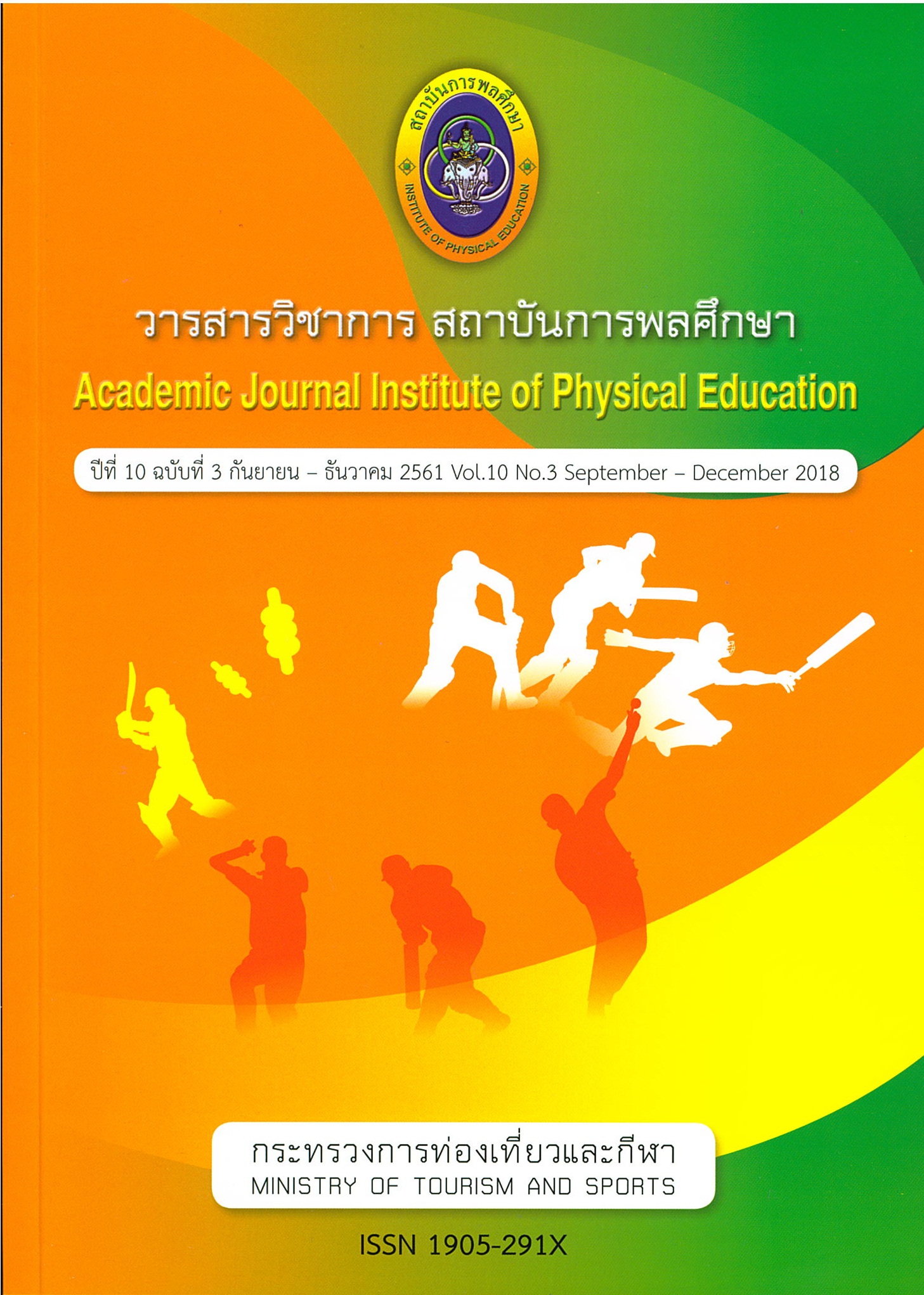Management Model of Thai Boxing Matches for Peace in the Southernmost Province of Thailand
Main Article Content
Abstract
Purpose: To study and develop a management model of Thai boxing matches for peace in the southernmost provinces of Thailand.
Methods: This study was divided into 3 stages. The first stage was to analyze and synthesize data regarding problems,obstacles and causes of southernmost people’s needs. Data was collected from documents, academic textbooks and related research articles as well as an interview conducted on 10 experts, professionals and involved parties to create a conceptual framework for the research.The second stage was to develop a management model of Thai boxing matches to make peace in the southernmost provinces of Thailand. Delphi Technique was used together with analysis and synthesis of Thai boxing competition strategy collected from interviewing 17 experts, professionals and related parties. The last stage was tocheck appropriateness and feasibility of the model througha group discussion between 12 experts, professionals and people in Thai boxing industry.
Results:The management model of Thai boxing matches was composed of an objective and a methodology, with 9 components: 1)humanresources; 2) financial budget; 3)equipment; 4) Thai boxing matches; 5) public relation; 6) people participation; 7) understanding in the community; 8) community access through community activities; and 9) community development with people.
Conclusion: The management model of Thai boxing matches for peace in the southern most provinces of Thailand is appropriate and applicable. Median and Interquartile Range highly conformed in all items, with Mdn-Mo< 1.00 IR<1.50 and IOC=1
Article Details
The published article is a copyright of the Academic Journal of Thailand National Sports University. The passage appeared in each article in this academic journal is a perspective of each author which is not related to the journal. Each author is required to be responsible for all components of his/her own article. If there are any mistakes, each author must be responsible for those mistakes on his/her own.
References
การกีฬาแห่งประเทศไทยกระทรวงการท่องเที่ยวและกีฬา. (2550). แผนยุทธศาสตร์การพัฒนากีฬาอาชีพและแผนปฏิบัติงานกีฬาอาชีพ ระยะ 4 ปี (พ.ศ. 2551-2554). กรุงเทพฯ:การกีฬาแห่งประเทศไทย.
น้อม สังข์ทอง. (2543).การจัดการแข่งขันกีฬา (ฉบับปรับปรุงใหม่). (พิมพ์ครั้งที่2).สงขลา: ภารกิจการผลิตเอกสารและตำรา กลุ่มงานส่งเสริมและประกันคุณภาพการศึกษา มหาวิทยาลัยทักษิณ.
วรศักดิ์ เพียรชอบ. (กรกฎาคม - ธันวาคม 2545).“กีฬา”วารสารวิทยาศาสตร์การกีฬาและสุขภาพ,3(2).
สถาบันการพลศึกษา กระทรวงการท่องเที่ยวและกีฬา. (2553). รายงานผลการปฏิบัติราชการตามคำรับรองการปฏิบัติราชการ ประจำปีงบประมาณ พ.ศ. 2553. กรุงเทพฯ: กระทรวงการท่องเที่ยวและกีฬา.
วีรศักดิ์ วิศาลาภรณ์. (2558). รูปแบบการพัฒนาสถาบันการพลศึกษาสู่ความเป็นมหาวิทยาลัยกีฬา. บัณฑิตวิทยาลัย มหาวิทยาลัยราชภัฏจันทรเกษม.
Bonnie L. Parkhouse. (2005). The Management of Sport: Its Foundation and Application Fourth Edition. Printed in Singapore.
Chappelle, J.L. and Bayle, E. (2005). Strategic and Performance Management of Olympic Spot Organizations. United States: Human Kinetics.
Jay Coakley, Ph.D. (2007). Sports in Society: Issues and Controversies Ninth Edition. New York: The McGraw-Hill Companies, Americas.
Robbins, S.P., and Coulter, M. (1999). Management. (6th ed), New Jersey: Prentice Hall, Inc.
Sallies, E. (2002). Total quality management in education (3rd ed), London: Kogan Page Limited. Schermerhorn.
JohnR.Jr., Hunt, James G. and Osborn, Richard N. (2000). Organizational Behavior. (7th ed), U.S.A.: Wiley and Sons, Inc.


